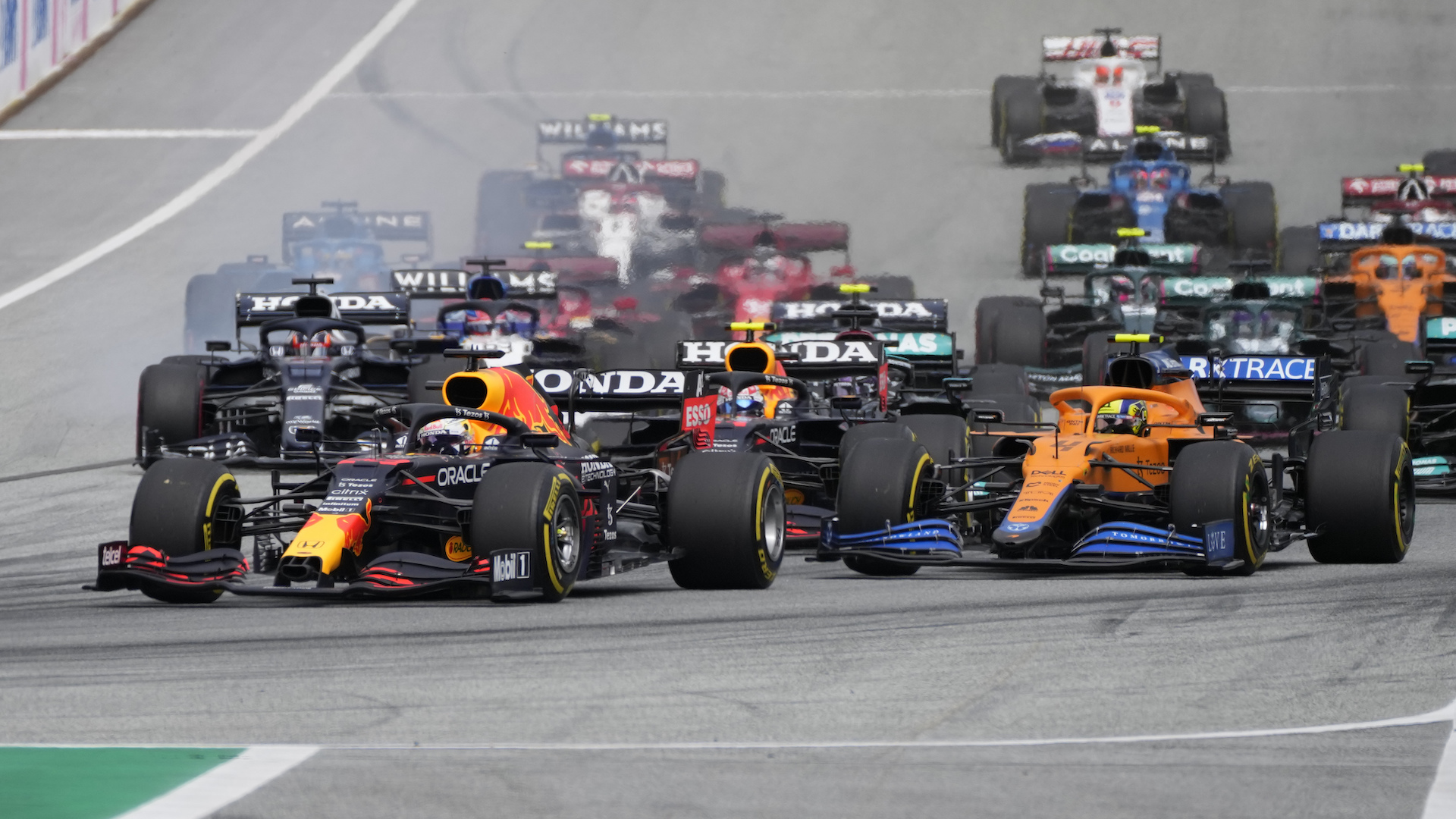

Ah, the British Grand Prix. The first-ever world championship Formula One race was held at Silverstone in 1950, so it’s only fitting that it holds the first-ever F1 sprint qualifying session. Sprint qualifying is essentially a shortened Saturday race that takes place after Friday qualifying but is not the usual race that takes place Sunday. Yes, it’s complicated, so I’ve broken it down for you.
Ever since Liberty Media took over F1 it’s been looking for ways to modernize the sport, from working with Netflix to reach record audiences to a more traditional thing for F1 owners to do: tinker with the quali format. Even in the hybrid era, we’ve had shenanigans like knockout qualifying and there’ve been plenty of weird attempts to fix something that really isn’t broken.

To understand what’s going on with the sprint you first have to know how a normal F1 weekend works: Thursday everyone gets bothered by journalists in what’s mostly a media day, Friday there are two practice sessions on track, Saturday there’s a final practice session in the morning then qualifying, and on Sunday there’s a race.
Here’s how it’s going to work at Silverstone this weekend: Friday there will be a practice session in the morning, then a regular qualifying session (same as the current format) in the afternoon, where all the cars get to set their fastest lap. The five slowest cars will get eliminated in Q1, the next slowest five in Q2, and then five more in Q3. The results of Q3 will set the grid for Saturday’s Sprint qualifying, and whoever goes fastest then also gets the Pirelli Speed King Award, which I sincerely hope is a tire with a party crown on.
Then, on Friday night, everyone goes home and comes back on Saturday morning for a second practice session that’s 60-minutes long. In the afternoon, the grid is set for the Sprint quali in the order set by Q3 on Friday, and the cars set off for a 17-lap race free of pit stops and with free tire choices for the drivers.
The finishing order of the sprint race determines the grid for Sunday’s main race, sort of like how Saturday’s Q3 was before this format. Unlike before, however, the top three finishers of the sprint race will earn championship points, three for first, two for second and one for third, and there won’t be a podium ceremony. Other than that, everything like safety cars and general rules apply the same as if it were a shortened Grand Prix.
In between normal qualifying, practice, sprint qualifying, and the race, cars are in parc fermé, which means teams can’t change anything substantial on them. Normally that happens after normal qualifying and before the race, but obviously, there’s kind of an added day between them now.
This new format effectively means drivers and teams have only one hour on Friday morning to pick the majority of their setup for the weekend, test any new parts and make it stick. This is crucial for Mercedes since it’s bringing its last substantial upgrade package of the year to Silverstone.

Confusingly, although the sprint race sounds like an extra session, drivers aren’t expected to change tires during it—unlike they would in practice—so they’ll actually get 12 sets of Pirelli dry weather tires, not the usual 13. To make things even more fun, Pirelli is bringing a new construction of tire that’s only had a tiny bit of running during practice at the Austrian Grand Prix, but will hopefully stop the exploding problem.
Lewis Hamilton reckons the sprint will be “a procession” as only the top three can fight for points, and 17 laps of Silverstone is probably enough to have the fastest cars knocking on the rear wings of backmarkers to lap them. Meanwhile, everyone else will be trying to nurse their car around in practice mode to keep it primed and ready for the Grand Prix the next day.
Former F1 CEO Ross Brawn says he thinks drivers will go flat-out regardless, but he would say that since he invented this format, of course. To be fair, there is a motivation for drivers to get as far up the order as possible, even without points because that’s where they’ll start Sunday’s race.
Hope you understand F1 Sprint Qualifying better now.
Got a story tip? Mail me on hazel@thedrive.com